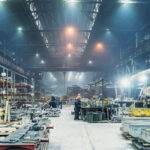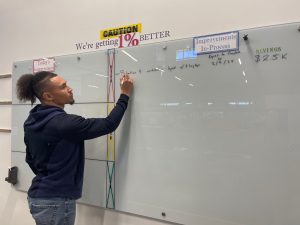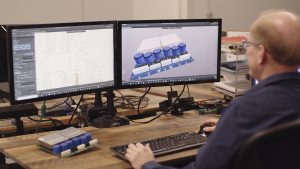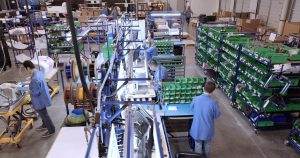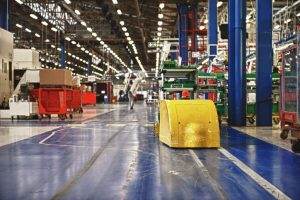
Transportation Benefits to US Manufacturing
In our last blog, we discussed current global conditions and proposed that it is time to reassess our supply chain. Does global outsourcing still make sense?
The news is full of supply chain challenges. Each of us has seen the empty shelves in our local markets just waiting for the next delivery. Ocean containers are either backed up on ships or sitting in ports waiting for trucks. There doesn’t appear to be any end in sight. Transportation is a big impact on our supply chains. Currently, it is taking longer, costing more and tying up more of our cash.
Can your company absorb this increase in costs and time?
Supply Chain Problems from Ocean Freight
As part of the global outsourcing model, most companies chose ocean freight as their most affordable method of transportation.
In the last 18+ months, the China/Eastern Asia route to the US West Coast has seen container prices increase almost 400%. All global routes have seen unusually high increases. Companies are struggling to pass on these cost increases to their customer and are experiencing margin erosion.
Here is a simple example of how the freight increase impacts product costs:
- Prior to Freight Increase:
o 1000 Units per container = $3.80 freight per unit
- With Current Freight Rates:
o 1000 Units per container =15.50 freight per unit
If the price increases weren’t bad enough, at the same time overall service levels declined. It’s hard to explain to a frustrated customer why their goods are taking longer to deliver and cost more! In the second half of 2021, the news was full of stories and pictures of the huge backlog of container ships in the LA port waiting to be unloaded.
E2open’s Ocean Shipping Index finds that in late 2021:
- The average global shipment took 12 more days, or 23% longer, than the same period last year
- Overall lead times from North America to Asia took 17 days longer 25% longer
When lead times are weeks instead of days, it’s very difficult to react to changing demand scenarios and now many major retailers are stuck with inventory they no longer need. This isn’t just a risk for retailers, all companies have these potential risks when demand changes quickly and transit times are extended.
How will your company manage those risks if it happens to you?
Global Fees, Taxes and Tariffs, etc.
Even before we started seeing the increases in freight, tariffs have been increasing over the last few years. So now we have longer transit times, and increased freight costs combined with increased tariffs. During the Trump administration tariffs from China increased for some product classifications significantly. The Biden administration has made some adjustments, but for many electronics, the tariffs are now as high as 25%.
- In 2019, The World Bank reported that the US tariff weighted average was 13.78%, a 12.19% increase from 2018.
If our above pricing example was an electronic component, you would also pay an additional 25% of the value of the goods on top of the higher freight costs. Tariffs vary by product, and you can confirm your current tariff expenses by checking your specific HTS code (Harmonized Tariff Schedule).
In addition to freight and tariff costs, your landed costs will also include some or all of the following:
- Terminal Handling Charge
- Consolidation Fee
- Surcharges: Drayage Fee, CAF Charges, BAF Factor, Low Sulphur Fuel Charge, Peak Season, Carrier Security, etc.
- Custom Clearances Fee
- Merchandising Processing Fee
- Harbor Maintenance Fee (HMF)
- Delivery Fee
In our pricing example assuming an electronic item:
- Product costs $5.00 + freight of $15.50 + tariffs $1.25 + various fees $.50 = $22.25 Landed Costs
Depending on the base costs of your imported product, you could be paying multiples in transportation costs. As you assess your current supply chain, consider all the extra costs and fees that are being added to your product costs. Is it still the right solution? Also, what is it costing you to have critical capital tied up in inventory that isn’t even available to you?
Perhaps it’s time to consider a US-based manufacturer?
Suppose you partner with someone like E4D Technologies. In that case, we can reduce your factory-to-factory transit time from over 100 days to 3 – 5 days AND you will see a significant reduction in overall transportation costs. This provides you with better cash flow as materials will be in your factory; before you are required to pay in full. Want to learn more about how E4D Technologies can help your business? Contact us!
Photo Sourced from Getty Images: #1318116805

